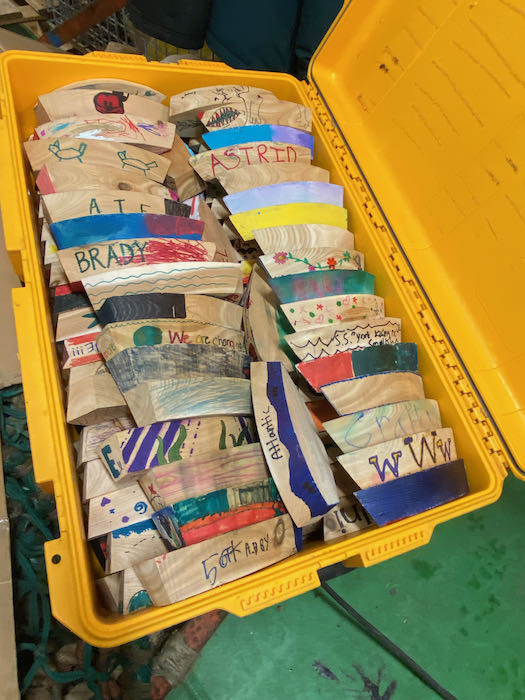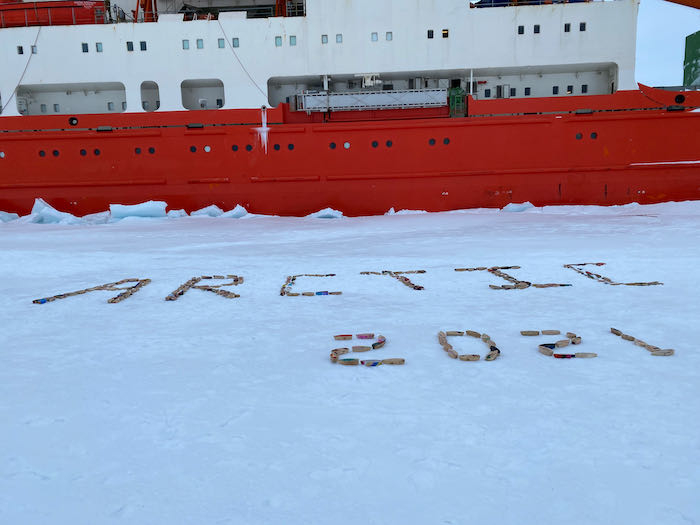Personal shout-out to my wife Naomi on her Birthday!
We had a meeting the evening of our first ice station, and during the meeting, Chief Scientist Igor Polyakov talked about the 15 personnel who would be working on the ice that day. All of a sudden, he announced my name and that I would be working with the boats. Boats?!? Boats?!? I don't have no stinkin' boats - sorry, obscure movie reference paraphrase (leave a comment in the section below if you recognize it).
After the meeting, I went to talk to him, and he told me that he had been given a shipment of wooden boats from "Float Your Boat" (floatboat.org), a Seattle-based organization designed to get students involved in global ocean field research, and he wanted me to deploy them.
I went up to the hangar where all our equipment is stored and found 2 large containers of wooden boats. Each boat is made from cedar donated by Dunn Lumber and is cut, branded, and numbered by the Center for Wooden Boats in Seattle. Then, the boats are decorated by students from Seattle Public Schools and the National Nordic Museum in Seattle. Some of the boats have simple signatures, while others are elaborately decorated with polar bears, orcas, mermaids, and various decorations. The boats are registered in a database for tracking as they make their way across the Arctic.


The 2 containers were craned off the ship onto the ice.

One of the boats, #315 was elegantly signed by Danielle on the sides, but it looked like she had little time for other decoration. We decided to re-christen her boat "Danielle" and label it with NABOS 2021 with all of the members of the international science party signing it - thanks Danielle. Another boat (#290) had no legible writing on it, so I "co-opted" it to use for a little Public Relations opportunity.


Then, it was my job to arrange the boats on the ice. From what I understand, some groups just dump them in a pile, but people said it just looks like littering. Summoning my (limited) artistic talents, I plotted out a pattern for the boats to celebrate these students.


Because we also deployed an ice sensor, scientists may be able to indirectly track the drift pattern of the boats. We left them at 78.48 N and 179.96 W. They will ride the ice floe until it breaks up and then follow the ocean currents. If any of them wash ashore, hopefully someone will find them and report them to floatboat.org. It may take some time - boats deployed in 2015 in northern Alaska washed up in Iceland 3 years later. If they do, it will be worth it for this great program. Hopefully, PolarTREC and Float Your Boat can deepen this collaboration in the future.


Comments